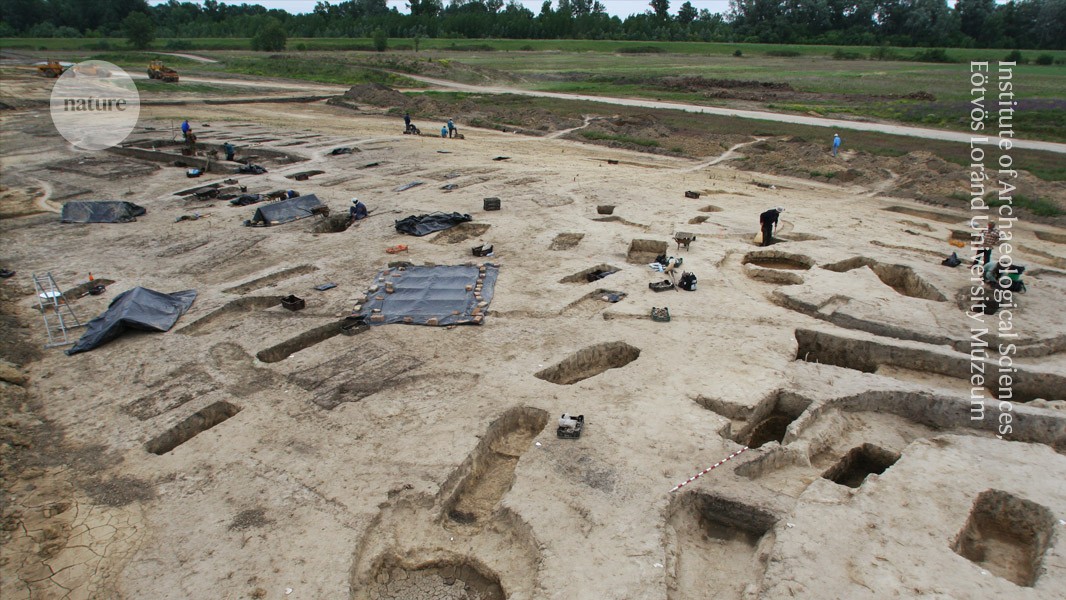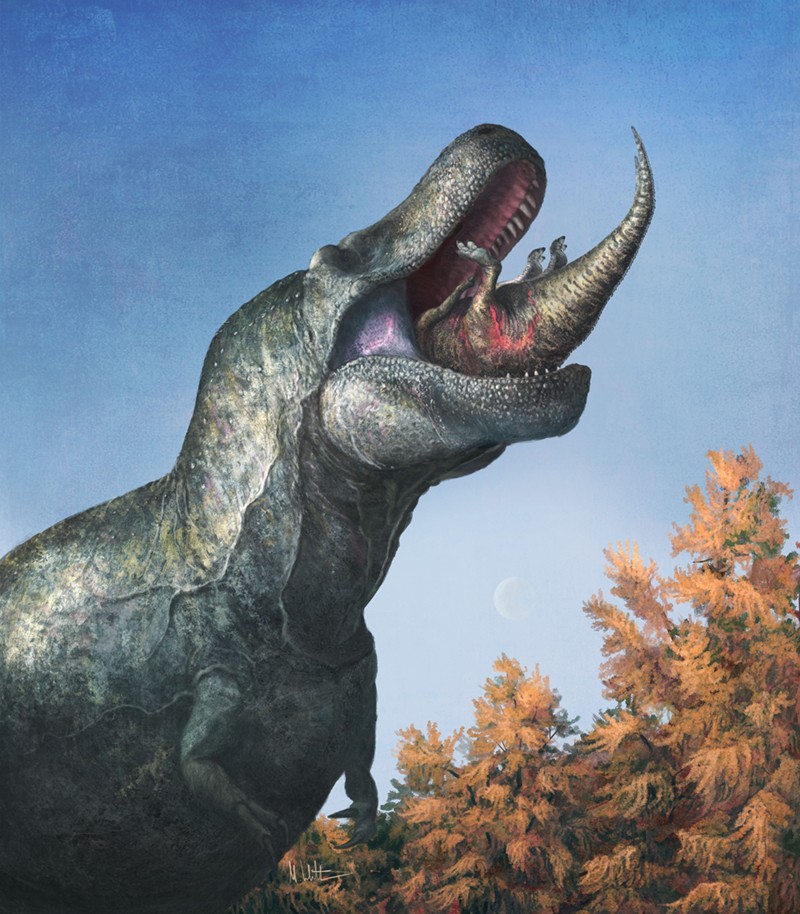A juvenile Edmontosaurus disappears into the jaws of Tyrannosaurus. The reconstruction of soft-tissues around the jaws of T. rex strongly suggests that it resembled lizards with lips rather than lipless crocodylians.Credit: Mark P. Witton
The fearsome maw of the iconic Tyrannosaurus rex has had a makeover. According to a study published today in Science1, the dagger-like teeth of theropod dinosaurs such as T. rex would not have been visible when their mouths were closed. Instead, they would have been concealed behind thin, scaly lips.
Reconstructions of large theropods — whether in Hollywood films or scientific texts — often depict the prehistoric predators as having jaws full of exposed teeth, even when their mouths are shut. Palaeontologists had reasoned that theropod teeth were probably exposed because the teeth are so big, and because the closest living relatives of theropods, alligators and crocodiles, have toothy grins.
But when Kirstin Brink was a graduate student at the University of Toronto, Canada, in the 2010s, she and fellow students Thomas Cullen and Derek Larson got talking over a few beers about whether that depiction was accurate. “It just looks so weird when the T. rex mouth is closed, and you can see the teeth,” she says.
Brink, now a vertebrate palaeontologist at the University of Manitoba in Winnipeg, Canada, notes that modern-day lizards, such as iguanas and Komodo dragons, have lips that hide their teeth.
Other palaeontologists have also wondered whether extinct theropods smiled like a crocodile or had lips like lizards. But Brink, Cullen, Larson and their colleagues are the first team to examine the skulls and teeth of theropods and their living relatives to settle the debate.
Brink says that the tooth enamel in theropods points to them having lips that cover the teeth. “Enamel needs to stay hydrated,” she says, otherwise it is prone to cracking.
In crocodiles, the enamel is thick and stays hydrated because they live in the water. Even so, crocodile teeth bear the signs of cracks and damage on their outer surface. That’s not the case in theropods, she says. Theropod teeth are covered by just a thin layer of enamel, indicating that these dinosaurs probably had lips to keep the teeth protected and coated in saliva when their mouths were closed.
Gummy dragons
Brink and her colleagues also compared theropods with Komodo dragons (Varanus komodoensis), one of the few living reptiles with teeth shaped like those of theropods. “Komodo dragons are weird though, because they have these gigantic gums,” says Brink. There’s no evidence that theropods had such gummy mouths, but it’s possible, she says.
“These authors have given T. rex a facelift,” says Steve Brusatte, a vertebrate palaeontologist at the University of Edinburgh, UK. The work is “the single strongest case for lippy tyrannosaurs yet”, he says.
Soichiro Kawabe, a vertebrate palaeontologist at Fukui Prefectural University in Eiheiji, Japan, says he has long suspected that theropod enamel was too thin for the teeth to be exposed. “So I am happy that the scientific data has now been presented,” he says. “It looks less monstrous and more natural,” he adds. Kawabe would like to see similar work to be done in other prehistoric creatures, such as toothy pterosaurs, for which the facial morphology is less known than for the well-studied T. rex.
T. rex wouldn’t have been able to purse its lips like humans do because it wouldn’t have had the necessary muscles. “Dinosaur lips would have been scales and keratin, and some soft bits covering the teeth from the outside, not the big fleshy and pouty lips of humans,” says Brusatte.
“I doubt it will be the final word in this contentious debate,” he says. “Ultimately, we need to find a fossil T. rex mummy with skin and muscles and scales still preserved on the head,” he says. “That would tell us once and for all whether there were lippy tissues covering the teeth, or whether the teeth were more exposed.”








More News
DNA from ancient graves reveals the culture of a mysterious nomadic people
Rat neurons repair mouse brains — and restore sense of smell
Transient loss of Polycomb components induces an epigenetic cancer fate – Nature